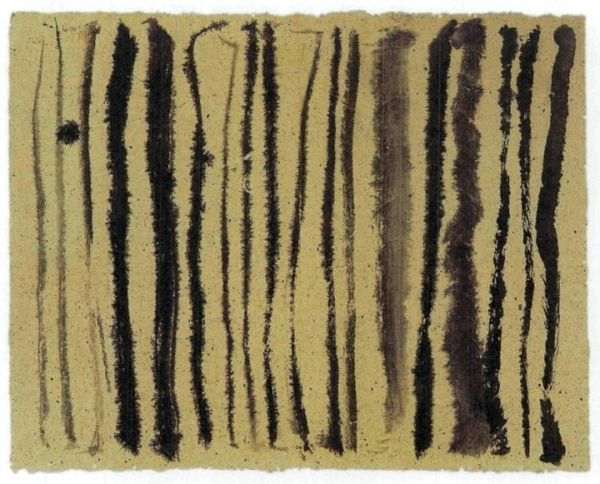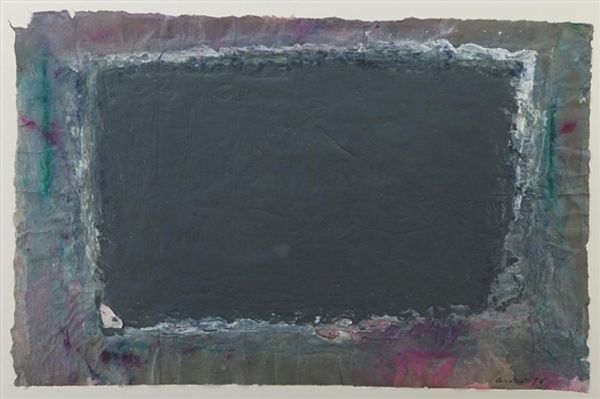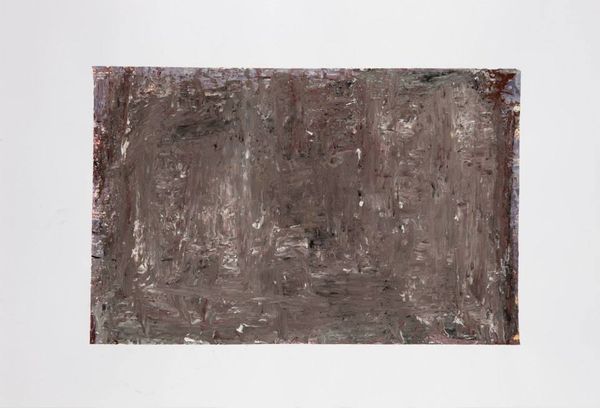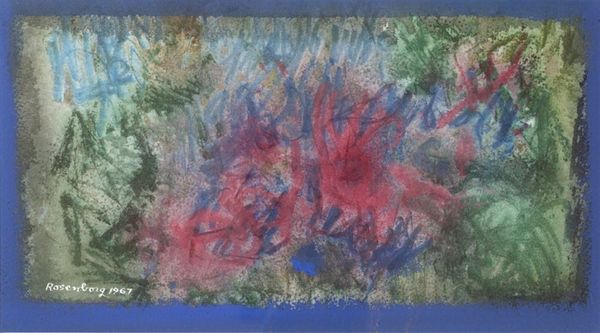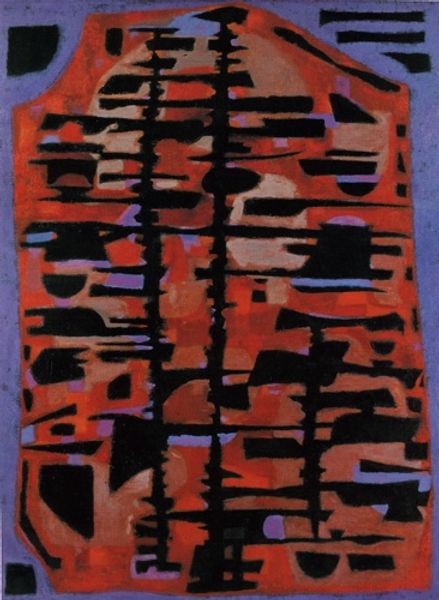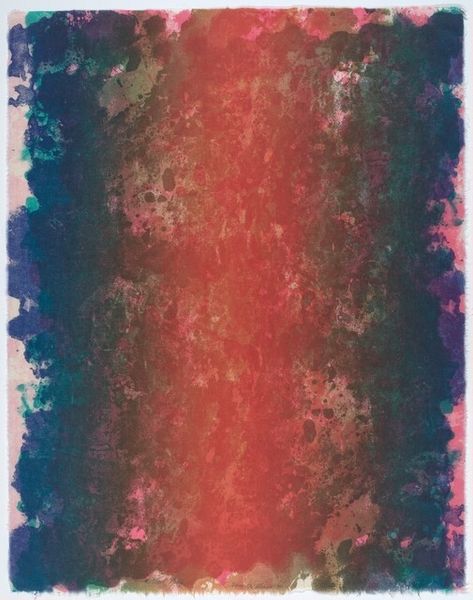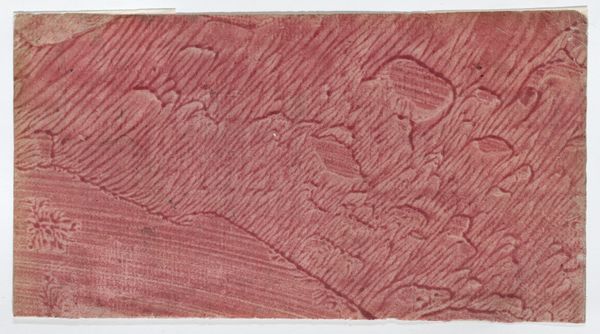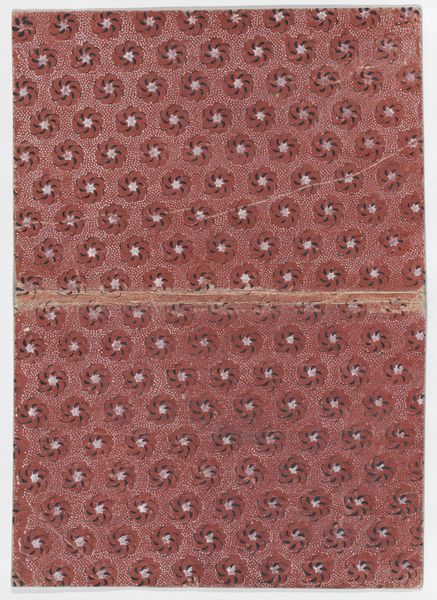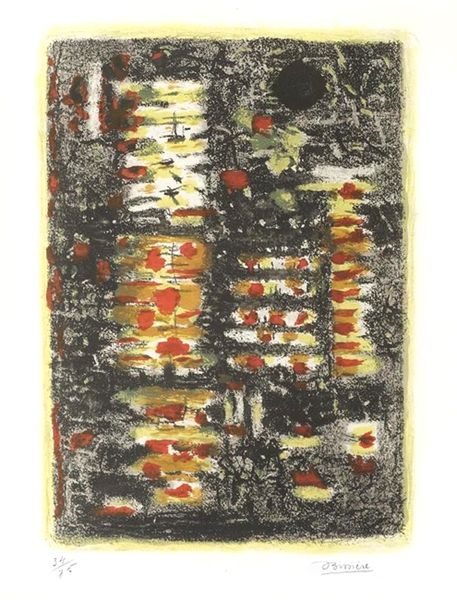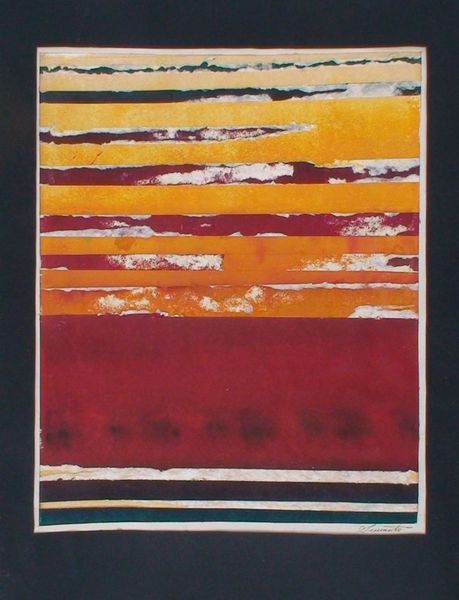![Untitled (Study for Seagram Murals) [recto] by Mark Rothko](/_next/image?url=https%3A%2F%2Fd2w8kbdekdi1gv.cloudfront.net%2FeyJidWNrZXQiOiAiYXJ0ZXJhLWltYWdlcy1idWNrZXQiLCAia2V5IjogImFydHdvcmtzL2M1YjgxYTJmLTVmZGItNDRkNy1hYjAzLTRlODI3NTNiMGE3Yy9jNWI4MWEyZi01ZmRiLTQ0ZDctYWIwMy00ZTgyNzUzYjBhN2NfZnVsbC5qcGciLCAiZWRpdHMiOiB7InJlc2l6ZSI6IHsid2lkdGgiOiAxOTIwLCAiaGVpZ2h0IjogMTkyMCwgImZpdCI6ICJpbnNpZGUifX19&w=1920&q=75)
drawing, dry-media, graphite, charcoal
#
abstract-expressionism
#
drawing
#
abstract expressionism
#
form
#
dry-media
#
abstraction
#
line
#
graphite
#
charcoal
Dimensions: overall: 10.6 x 45.7 cm (4 3/16 x 18 in.)
Copyright: National Gallery of Art: CC0 1.0
Editor: Here we have Mark Rothko’s *Untitled (Study for Seagram Murals)*, created around 1958-59 using graphite and charcoal. Looking at these stacked rectangles, one above the other, I feel an intense compression, almost a looming sense of confinement. What formal qualities strike you the most when you look at it? Curator: It is fascinating how Rothko manipulates the concept of the rectangle. Notice the variations in their boundaries, from the loosely defined edges of the first form to the more rigid geometry of the subsequent blocks. What effect do you think the contrast in texture has on the overall composition? Editor: I think the variations introduce an almost unsettling depth, countering any immediate reading of it as flat. How would you describe the relationship between line and color in achieving that depth? Curator: The chromatic scale here, the earth tones, contributes to a sense of interiority. There’s a movement from lighter to darker tones which is then reiterated across the sequence. The layering and blending create what? Editor: Hmm, maybe a feeling of veiled light, drawing me in further. Are there other formal contrasts in line or color worth discussing? Curator: Yes. Observe how each block differs not just in color saturation, but in the directional application of the charcoal or graphite. Some are striated horizontally, others seem more scumbled, adding a tactile dimension. This adds to the sense of spatial recession. How does considering these qualities affect your reading of confinement? Editor: I see it as an architectural drawing but it has no dimension, it feels less about a physical place now and more about interior psychological space instead, all within the formal arrangement of lines and blocks of colors. Curator: Precisely. This work underscores the potent emotional capacity of seemingly simple forms. Editor: Thanks, this insight has transformed how I read Rothko's intention.
Comments
No comments
Be the first to comment and join the conversation on the ultimate creative platform.

